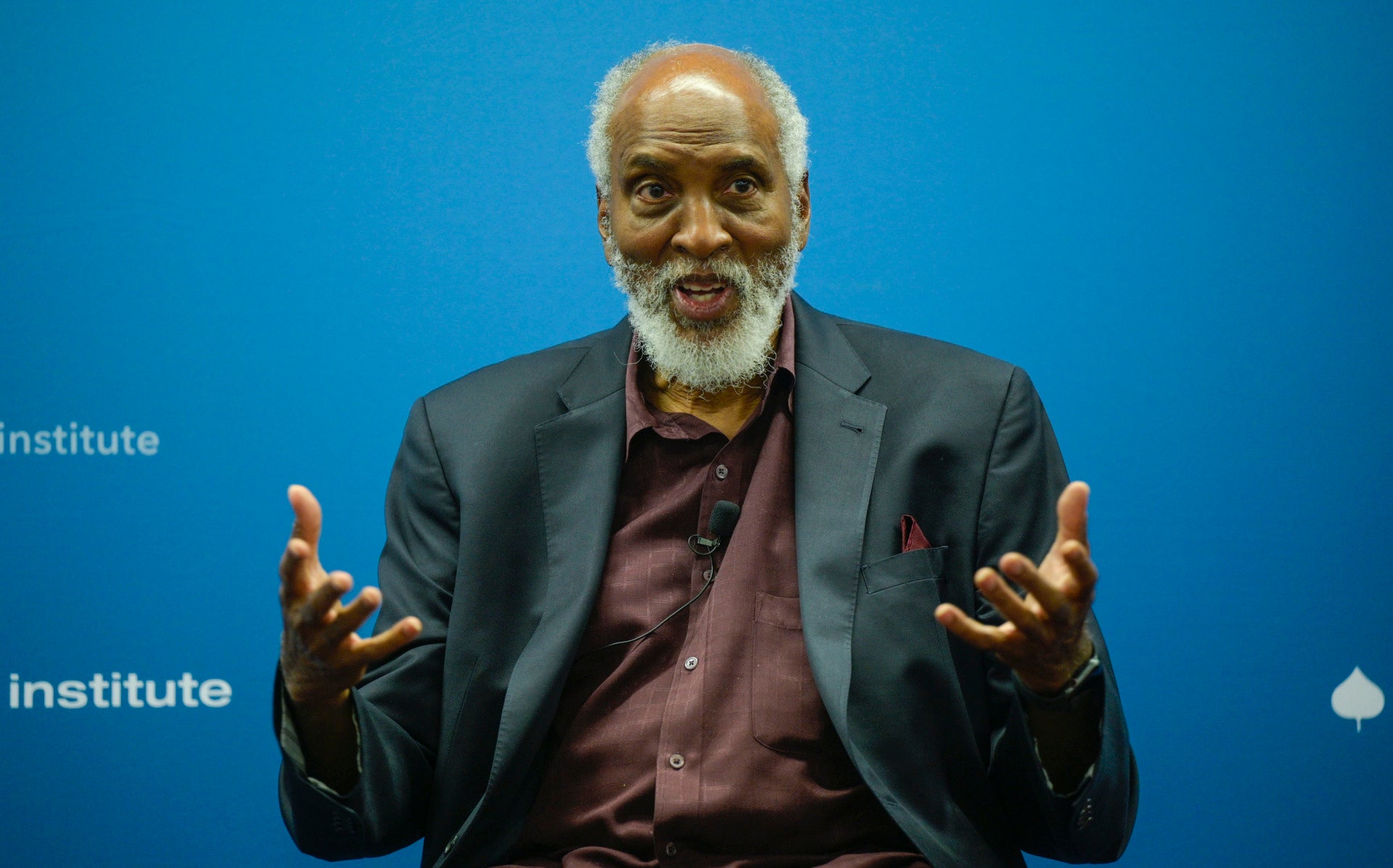
(Photo credit: Erik Stegman.)
This summer, a group of Native American youth took off running from the Standing Rock Sioux Tribe. Two thousand miles later, they delivered a petition in Washington, D.C. that would help spark the largest gathering of Native nations in over a hundred years – to stop the Dakota Access Pipeline.
The petition those youths delivered to the Army Corps of Engineers outlined the threats that the recently approved pipeline project posed to their community’s sacred sites and water supply—issues all too common to tribes across our country. The youth took off running, our nations began to gather, and a new movement was born. Over the past several months, thousands of Native people and their allies have been camped out on the Standing Rock reservation to protest the construction of the Dakota Access pipeline.
I had the humbling honor to visit the camp at Standing Rock this month, and what I found there will be close to my heart for the rest of my life. I visited the youth lodge where Native youth from across the country were camping, meeting, and discussing the priorities that mattered to them. I visited a kitchen hosted by the Hoopa Valley Tribe, where I had some of the best frybread of my life, and talked to elders from several tribes about the need to bring our youth and elders together. I visited with First Nations leaders and discussed our need to reach across the artificial border created on our lands to bring greater attention to the crisis of suicide for our Native youth in Canada and the US.
There’s something much bigger happening at Standing Rock than a pipeline.
The camp began with a call to action to stand against the construction of a pipeline, but serious and long-standing challenges that tribes share in common turned it into a movement. For generations, tribes have struggled to protect their sacred sites, their land, and their water. The federal government—through the treaties it signed with tribal nations—has a critical responsibility to those nations when it comes to protection efforts. That is why the Administration announced earlier this month that it would halt further development for the pipeline over a small part of federal land at Lake Oahe after a federal court denied the tribe’s request for an injunction on the project. A federal appeals court has since halted the construction of another section of pipeline while it reviews the request for an injunction.
In another region of the country, a coalition of tribes has been fighting to protect an area known as Bears Ears, in southern Utah. This area is home to a large number of sacred and religious sites for the five member tribes pushing to protect it. For years, these tribes have experienced grave-robbing and looting, destructive energy projects, damage from recreational vehicles, and more. As with the situation at Standing Rock, tribes are demanding meaningful consultation by the federal government about protecting these sites as part of their treaty-bound duty, and respect for their traditional knowledge and oral histories in consideration of proposed projects.
Bears Ears is only one example of how these challenges are playing out for tribes across the country. While I was at the camp this month, these core issues seemed like only the beginning of a broader and far-reaching movement in Indian Country with youth taking the lead. The protection of sacred sites and water are what compelled thousands to take time off of work and school, raise money from their community, and travel long distances to be part of the movement. But when many of them arrived, the power of the gathering itself sparked conversations across the camp about what we need to do to protect our children, improve our health and education, and ensure better opportunities for the next generation.
This is the bigger story behind Standing Rock.
I spent my last night in the Sicangu Oyate camp, situated across the Cannon Ball River from the larger camp. As I looked across the river after sunset listening to the evening drums and songs, I spent a lot of time reflecting on why this camp has been so powerful for Indian Country—especially our youth. By coming together in solidarity as Native nations, we’ve shown to the world what we mean when we say we are resilient and we shall remain. I work with thousands of Native youth across the country every day who draw strength from their culture to tackle the biggest challenges in their community. When those youth set out on their journey to Washington from Standing Rock, they set out to show the rest of us that we still have the power to heal the past together, and build a future where our young people feel valued, our sovereignty and cultures are strong, and opportunity is the norm—not suicide.
The camp at Standing Rock has come to symbolize that bigger vision for our future. We owe it to Native youth across the country to give them the platforms and the tools to see it through.
Erik Stegman is the executive director of the Center for Native American Youth at the Aspen Institute.

